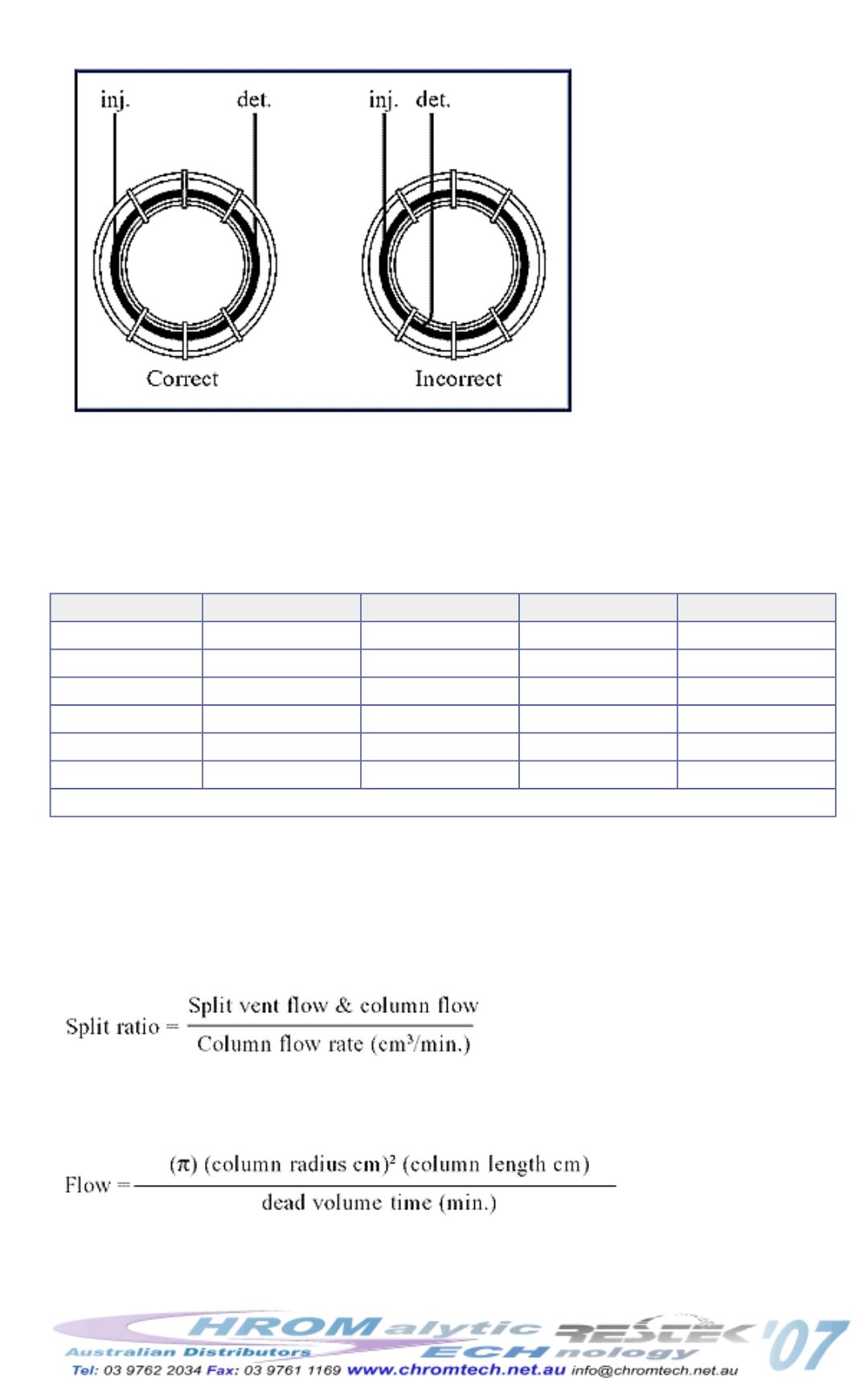
RestekCapillaryColumn InstallationGuide, Section II
Establishing Flow
Turn the carrier gas on and set the column head pressure to the values indicated in
Table II
*. These values represent approximate head pressures and flow rates. The
exact optimum pressures and flow rates for a particular columnwill be set at a later
time.
Table II ApproximateColumnHeadPressure (He or H
2
carrier gas)
length (m)
0.18mm ID 0.25mm ID 0.32mm ID 0.53mm ID
15
—
6psig
3psig
2psig
20
14psig
—
—
—
30
—
12psig
8psig
4psig
40
30psig
—
—
—
60
—
24psig
16psig
8psig
105
—
40psig
30psig
14psig
SeptumPurge Flow: between2 and5 cc/min.
* If you are having difficulty establishing the appropriate column head pressure for back pressure regulated systems,
then suspect septum or inlet ferrule leaks.
The split ratio is the amount of carrier gas exiting the split vent vs. the amount of
carrier gas entering the capillary column. The split ratio should be adjusted so the
sample amount reaching the column does not exceed the column's capacity. Typically, a
split ratio of 50 to 1 is used.
Table III
lists common split vent flow rates found using
hydrogen or helium carrier gases. Use the equation below to calculate the split ratio.
While the flow rate exiting the split vent is easy tomeasurewith conventional bubble
meters, the low flow rate exiting a capillary column can be difficult tomeasure. The
following equation can be used to approximate the column flow rate.
where pi = 3.1459, column radius and length are in centimeters, and time is inminutes.
For example, a 30meter x 0.53mm ID column operated at 20cm/sec. linear velocity
with helium has a flow rate of 2.65cm3/min.


